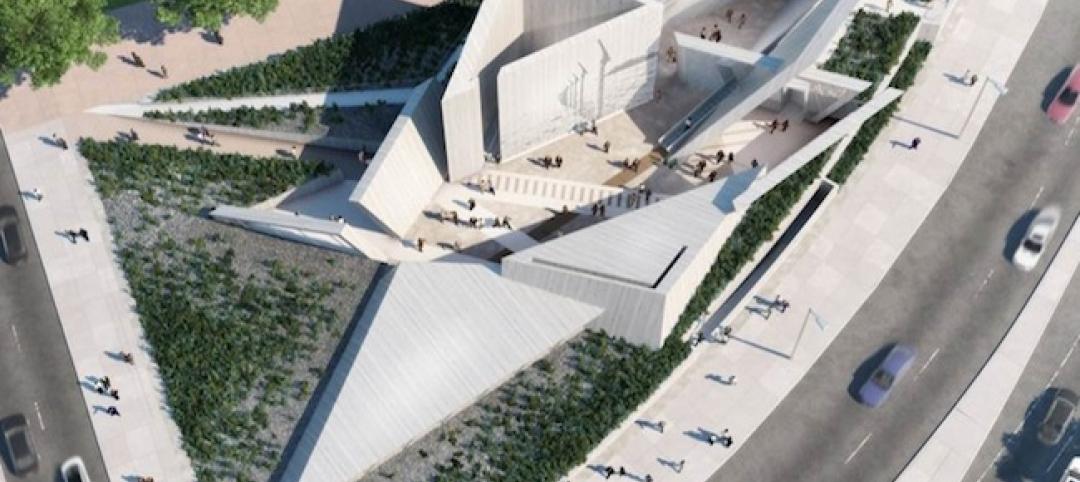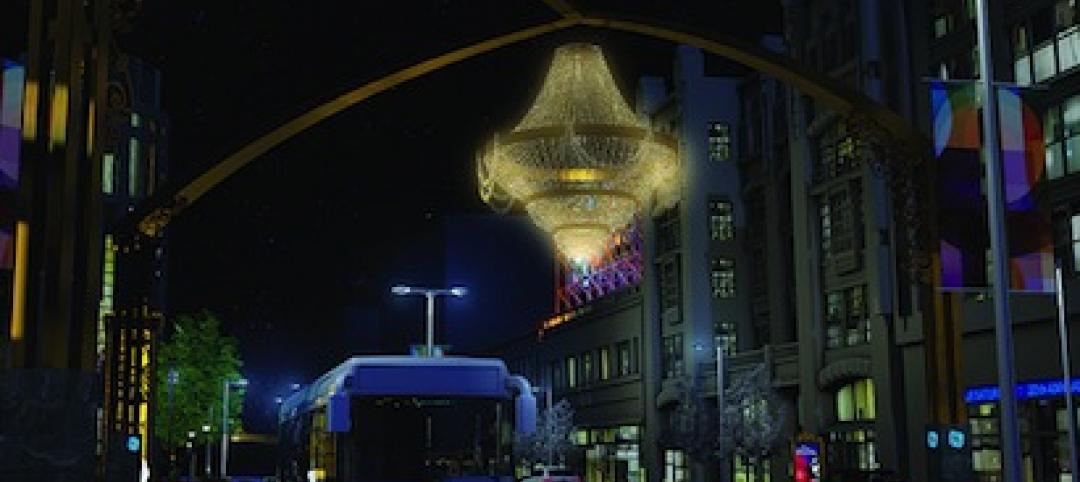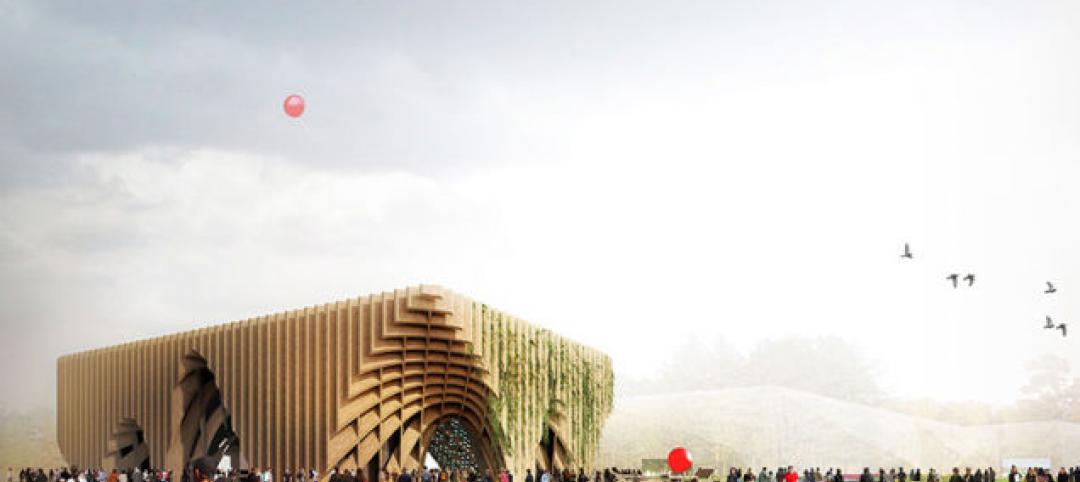The Virginia State Capitol Building—originally designed by Thomas Jefferson and almost as old as the nation itself—has proudly served as the oldest continuously used Capitol in the U.S.
But more than two centuries of wear and tear put the historical landmark at the head of the line for restoration.
The Building Team—led by the Gilbane Building and Christman Companies—installed entirely new M/E/P systems and added a 27,000-sf underground expansion featuring a visitors' center and ADA-compliant main entrance, office space and meeting rooms, and improved centralized security management.
However, digging near the building's foundation to create the underground expansion was no simple task. To prevent the building from moving, a slurry wall had to be constructed in a six-month process that involved excavating 10-foot sections, pumping bentonite grout to prevent the soil from collapsing, and then replacing the grout with concrete once each section was completed.
With the new entrance, visitors pass through the surrounding landscape, avoid climbing stairs, and are treated to a spectacular view from the south portico—the way Jefferson originally intended for the building to be viewed.
“Getting the tunnel in and making it work was quite a feat,” observed BD+C Renovation Awards judge K. Nam Shiu, P.E., S.E., MISE, VP, Walker Restoration Consultants, Chicago. “This project involved a great degree of discipline.”
To preserve the Capitol's historical splendor, dating back to 1906 when the east and west wings were added, extensive inspection, study, and research had to be conducted. Core samples were taken from the portico columns and key interior locations to assess the building's condition. Radar, metal detection, thermography, and ultrasound were utilized to assess the building's structure and layout. Scientists even chiseled away at the rotunda walls to determine the original paint color.
While working on the building's exterior, it was discovered that the stucco had been sealed with paint that prevented the building from breathing, thereby creating moisture and mold problems. Every speck of paint had to be removed, but due to the building's historical significance, only free-standing scaffolding could be utilized.
The stucco also had to be stripped so that damaged bricks could be replaced. Deteriorated mortar joints had to be tuck pointed with fresh, waterproof mortar. Finally, natural hydraulic lime stucco was applied to allow the building to breathe.
While all of the exterior doors were replaced and the building received a new roof, the original windows were temporarily removed, shipped to Kansas City, and restored. Even the original doorknobs bearing the Great Seal of Virginia were restored.
As for the Capitol's century-old granite steps, they had to be temporarily removed in sections weighing around 1,400 pounds in order to be repaired and restored. Once all the construction was completed, the steps were carefully returned to their original location.
During the meticulous process of restoring the Capitol, some areas of the building were found to be more deteriorated than projected. In addition, extensive testing of historic materials, in-depth historical research, and the application of specialized preservation techniques added to the project's complexity.
Judge Nam Shiu also pointed out the challenge of working on a hill and recognized the team's restoration efforts: “They also preserved all the environments and did not disturb the original entrance.”
The Building Team preserved Jefferson's legacy so future generations can enjoy this important American landmark.
Related Stories
| May 13, 2014
Libeskind wins competition to design Canadian National Holocaust Monument
A design team featuring Daniel Libeskind and Gail Dexter-Lord has won a competition with its design for the Canadian National Holocaust Monument in Toronto. The monument is set to open in the autumn of 2015.
| May 11, 2014
Final call for entries: 2014 Giants 300 survey
BD+C's 2014 Giants 300 survey forms are due Wednesday, May 21. Survey results will be published in our July 2014 issue. The annual Giants 300 Report ranks the top AEC firms in commercial construction, by revenue.
| May 9, 2014
New York Public Library scraps drastic renovation plans
The New York Public Library's controversial renovation, involving the removal of stacks from the Schwarzman building and the closing of the mid-Manhattan branch, has been dropped in favor of a less dramatic plan.
| May 2, 2014
World's largest outdoor chandelier tops reworked streetscape for Cleveland's PlayhouseSquare
Streetscape project includes monumental gateway portals, LED signage, and a new plaza, fire pit, sidewalk café, and alfresco dining area.
| May 2, 2014
Must see: French pavilion to take food from roof to table
France has presented its design for Expo Milano 2015 in Milan—its representative building will be covered in gardens on the outside, from which food will be harvested and served inside.
| Apr 30, 2014
Visiting Beijing's massive Chaoyang Park Plaza will be like 'moving through a urban forest'
Construction work has begun on the 120,000-sm mixed-use development, which was envisioned by MAD architects as a modern, urban forest.
| Apr 29, 2014
USGBC launches real-time green building data dashboard
The online data visualization resource highlights green building data for each state and Washington, D.C.
Smart Buildings | Apr 28, 2014
Cities Alive: Arup report examines latest trends in urban green spaces
From vertical farming to glowing trees (yes, glowing trees), Arup engineers imagine the future of green infrastructure in cities across the world.
| Apr 24, 2014
Unbuilt and Famous: LEGO releases box set of Bjarke Ingels' LEGO museum
LEGO Architecture has created a box set that customers can use to build replicas of the LEGO Museum, which is not yet built in real life. The museum, designed by the Bjarke Ingels Group, will commemorate the history of LEGO.
| Apr 24, 2014
Gothic-style dance center breaks ground at University of Southern California
The program for the three-story building will include a dance/performance studio, five dance studios, instructional classrooms, performer support spaces, costume storage, and faculty and administrative offices.














